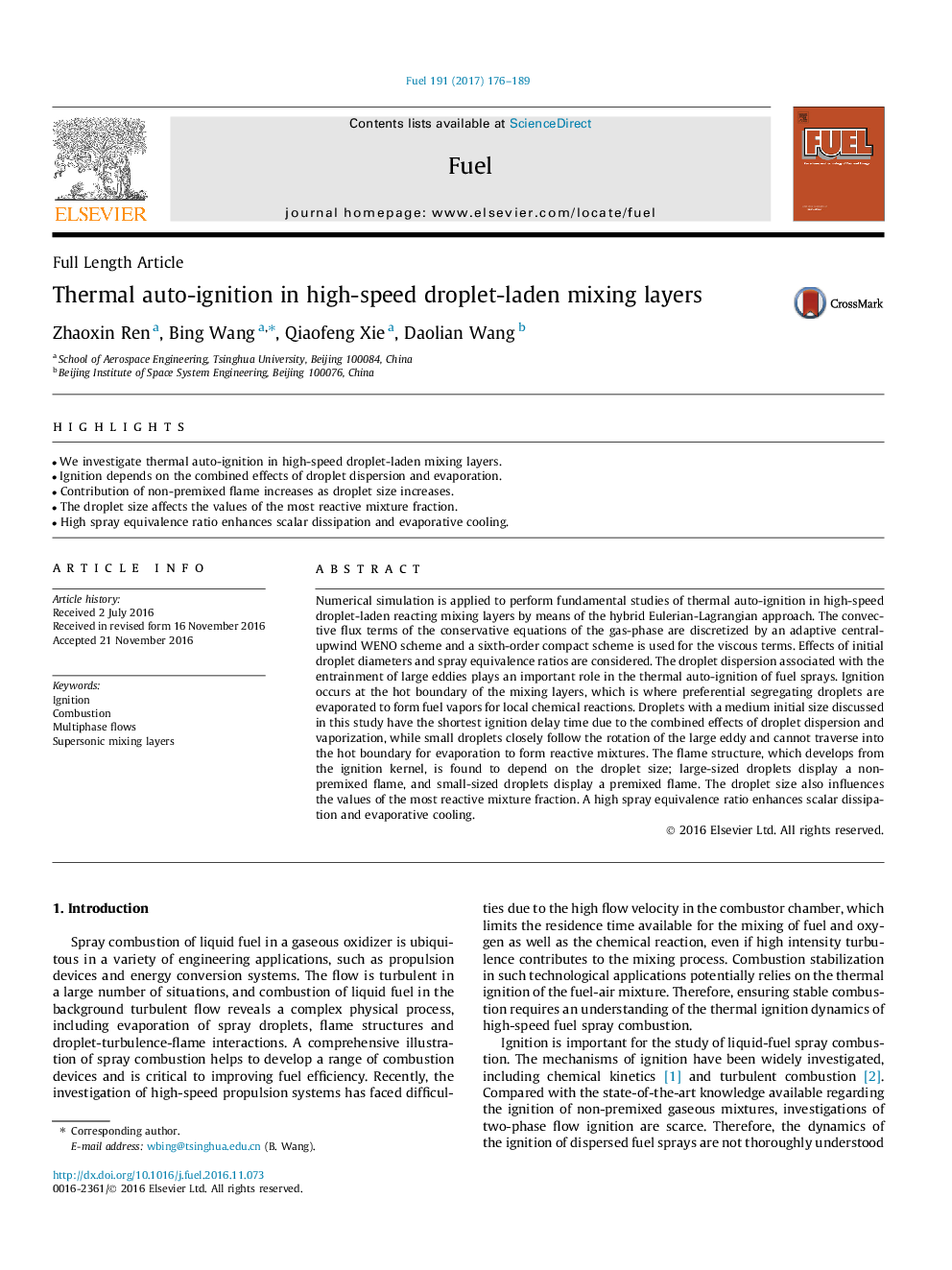| Article ID | Journal | Published Year | Pages | File Type |
|---|---|---|---|---|
| 4768761 | Fuel | 2017 | 14 Pages |
Abstract
Numerical simulation is applied to perform fundamental studies of thermal auto-ignition in high-speed droplet-laden reacting mixing layers by means of the hybrid Eulerian-Lagrangian approach. The convective flux terms of the conservative equations of the gas-phase are discretized by an adaptive central-upwind WENO scheme and a sixth-order compact scheme is used for the viscous terms. Effects of initial droplet diameters and spray equivalence ratios are considered. The droplet dispersion associated with the entrainment of large eddies plays an important role in the thermal auto-ignition of fuel sprays. Ignition occurs at the hot boundary of the mixing layers, which is where preferential segregating droplets are evaporated to form fuel vapors for local chemical reactions. Droplets with a medium initial size discussed in this study have the shortest ignition delay time due to the combined effects of droplet dispersion and vaporization, while small droplets closely follow the rotation of the large eddy and cannot traverse into the hot boundary for evaporation to form reactive mixtures. The flame structure, which develops from the ignition kernel, is found to depend on the droplet size; large-sized droplets display a non-premixed flame, and small-sized droplets display a premixed flame. The droplet size also influences the values of the most reactive mixture fraction. A high spray equivalence ratio enhances scalar dissipation and evaporative cooling.
Keywords
Related Topics
Physical Sciences and Engineering
Chemical Engineering
Chemical Engineering (General)
Authors
Zhaoxin Ren, Bing Wang, Qiaofeng Xie, Daolian Wang,
